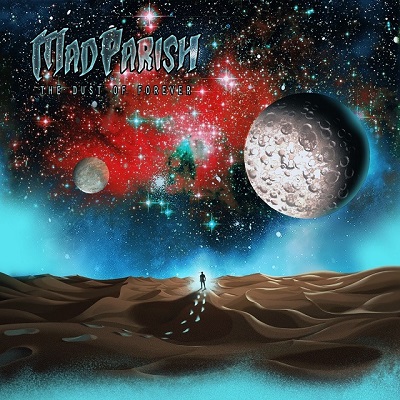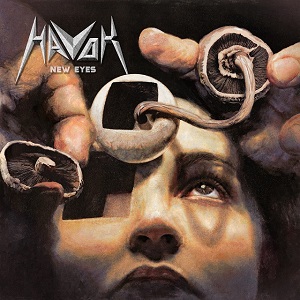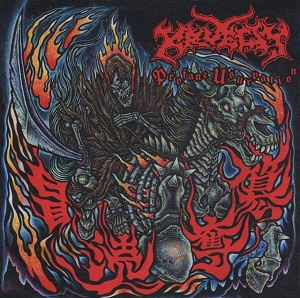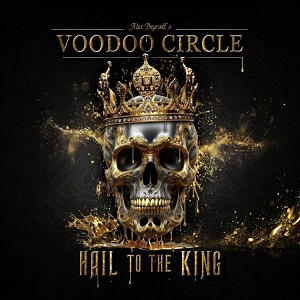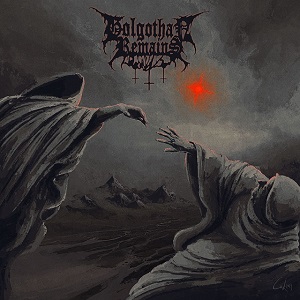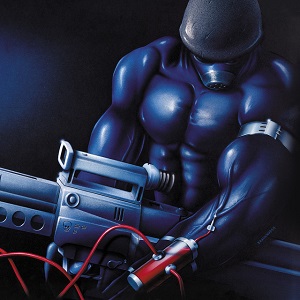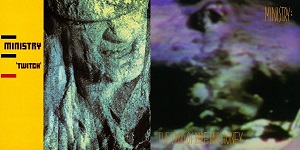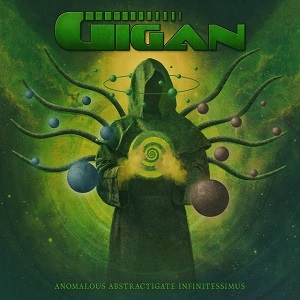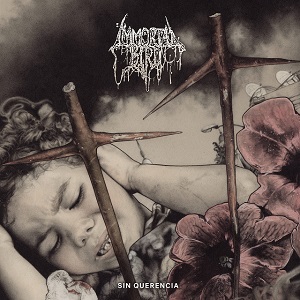CARNIFEX – Visions Of Demons And Hellfire
August 10, 2019, 5 years ago

“We’ve learned over these seven records that time is really our best friend,” begins Carnifex vocalist Scott Ian Lewis. “Our process is writing, listening, rewriting, and listening. We did a lot of that on this new album, World War X; that’s why it took so long, and we took so much time with it. We really wanted to give the music every opportunity to benefit from time; and make each song as complete as possible.”
World War X is comprised of nine songs, and Carnifex spent roughly 30 days working on each song – that requires a lot of patience. “Thankfully I am a patient person,” testifies Scott. “If I’ve learned anything, it’s that when you’re working on an artistic project – yeah, you can get a lot of great stuff through spontaneity; spur of the moment type things. But honestly, for me, the more time and craft we can put into working on a song… making it less about a muse and inspiration, and more about working on the parts we know can be better. The more we get to explore… I think that’s why the record goes some places that the previous records don’t. It gives us a chance to be more ambitious. But when you’re ambitious, you have to give yourself that extra time – if you’re going to be ambitious and try to do a record in three weeks, you’re going to run into some problems!”
That ambition requires a record label which believes in the band, and is not rushing the product to market, which Carnifex is fortunate to have. “Thankfully, Nuclear Blast took us off the leash for this album. They didn’t give us any time constraints. They didn’t give us a deadline. They signed us to this new deal at the end of 2018, where we got a lot more money – which is creative freedom. That means you get to work with the producer longer, you get to work with the artist doing the cover image longer; all that stuff. It really empowered us in that they didn’t involve themselves; they just let us be artists. And it was a fun experience.”

Speaking of the cover art, it’s undeniable that World War X features the best artwork Carnifex has ever had. Created by Blake Armstrong (In Flames), it’s quite different to the previous Carnifex album covers. “Actually, Gerardo (Martinez), he runs Nuclear Blast in The States – I was just telling him what we were going for cover-wise; we wanted a new direction, something that was cinematic and really presented the album in a different scope, compared to our previous albums. So, Gerardo recommended Blake; he had recently done a compilation cover for Nuclear Blast; he did some stuff for Slayer as well. We really wanted to bring the scale that the whole album is trying to establish. I showed Blake a lot of the stuff I was wanting to reference visually; surrealist and nihilist artwork from the First World War, Eastern European artwork. Then we traded ideas back and forth, starting in September (2018), and it came together.”
The album title, World War X. Is X being utilized as the Roman numeral for ten, or as the mathematical unknown variable? “Yeah, that’s it exactly. To reduce it down to something that’s very easy to say; X is exactly what it represents in math, which is, it can be anything. This particular one is the last one; it’s the war for survival. Really, what I tried to do with this album was take what I had done on Slow Death (released in 2016), and search for that connection to the listener on the other side. I also wanted to bring in some narrative theme and theatrical elements that weren’t on the previous ones; and are kind of hard to embrace fully when it’s a very personal, direct addressed record, which is what the previous albums were. The way the songs were written lyrically, it’s like I’m speaking to another individual; very personal. On this album, it’s a different lyrical approach; it’s really stepped back. Framing everything through war, but still finding that connection to personal, internalized struggles. It was the goal of everything. Going back to the cover, at the bottom you see these infernal creatures crawling out; that is really where allegory begins. It’s ourselves broken open, and our worst fears realized. Now, we have to face them, they’re out in the open. The whole album’s about that. Rather than facing these fears internally, on your own; face them on the front line like a soldier would. That’s the theme for the album.”
In a Nuclear Blast promo clip for World War X, Scott comments, “The album is about trying to find humanity in a world that has none.” That opens up a wide and vast, yet differing, landscape to each individual listener. “Yeah, exactly. That’s what it is; searching for humanity within this dystopian death trip that the album is. The album is a lot of art and a lot of theatre. There is so much room for allegory. It’s purposely vague in areas, because it’s going back to that X; you’re supposed to fill it in with your individual experience. Maybe a song is about fear or depression; but the specificity has to come from the listener engaging. To circle it back to searching for that humanity, that’s it. You have to find it for yourself. Nobody’s going to give it to you. Sometimes, humanity might just be piece of mind from paranoia or depression.”

The initial introduction to World War X was fantastic, that being “No Light Shall Save Us” featuring guest vocalist Alissa White-Gluz from Arch Enemy. “We had wanted to do a song with her for a while,” admits Scott. “Thankfully, through a mutual friend, Tommy Jones, our music video director; he had just worked with her on Metal Allegiance. They struck up a friendship, and when I mentioned we were trying to get Alissa on the record, Tommy was kind enough to connect us. During pre-production, I guess six to eight months ago now, we had a version of that song we sent to her. She really liked it, responded to the material, had a lot of ideas right off the bat; it was really collaborative early on, going back and forth. From the writing into the tracking, and all the way into doing the video, which was… a big effort by a lot of people. Everyone had to come together to make that video happen.”
It looks like Carnifex spent a full 24 hours in the desert. There aren’t filters on the camera lens; when it’s dark, the sun has set. “Yeah, I think all in all, the full shoot was 26 hours from when we left. It was shot four hours southeast of Los Angeles. So, from leaving the hub to getting back, it was 26 hours. But it was worth it! It was a real adventure. I’m glad that we captured what we did… it was a Herculean effort for sure.”
The location where “No Light Shall Save Us” was filmed is the same spot where George Lucas filmed Star Wars: Return Of The Jedi, back in 1982. “Yeah, it was really a neat location. Once we got there, we still weren’t there yet. There was a sandstorm that morning… there’s one road that leads you up. It’s where the trailer needed to go, all the equipment needed to go. But the sand had completely blown out the road, it was totally covered. It was two feet deep of beach sand. You can’t drive over it in a car. Luckily, our guitarist Jordan (Lockrey), drives this big 4x4 truck. That was the only vehicle that could actually get through the sand, so he had to ferry everybody and their gear up there. It was pretty epic.”
There’s one other guest on World War X, perhaps not as obvious because he’s a guitarist as opposed to a vocalist, although it’s no lesser of a contribution. That being Angel Vivaldi, appearing on “All Roads Lead To Hell”. “Man, he is just talented to the next level; I would say virtuoso. That collaboration came around completely differently. ‘All Roads Lead To Hell’ was the only song that wasn’t written when we got to the studio. When we got there, Jordan and I had to whip up one more. We’d spent so much time on the other ones, but we had to get another one together. We had some riffs, one or two skeletons of songs… but we weren’t feeling them. So, we started over, with the inspiration of the moment. We wrote ‘All Roads Lead To Hell’ in about six hours in the studio. We go back into the other room where Jason (Suecof, producer) was working on the other songs we’d already tracked. We showed it to him, and we started tracking it. Then randomly, Angel – who’s friends with Jason – facetimes Jason just to say, ‘Hey, what’s up?’ Then he asked what we were working on? And that turned into a guest spot! That’s exactly what happened, it was pretty funny.”
Carnifex unsuccessfully attempted to secure a couple of guest appearances on their previous album, 2016’s Slow Death. “And we had tried to get another guest on this album that didn’t work out, on a different song. We were hoping to have three or four guests honestly. The thing about guests, the biggest challenge is everybody’s schedule. When you go to actually do it, people’s availability is an issue. So, getting Angel was really the right time and the right place. I think he made that song special; I really like that one.”

Keyboards play a big part in “This Infernal Darkness” and the title track, “World War X”. Yet, Carnifex does not have a keyboard player in their lineup. Who’s playing what is heard on the album? “Well, it’s being played by a program, but it’s being written by Shawn (Cameron, drummer) and Jordan (Lockrey, guitarist). All the stuff you’re hearing, those are all programs that you basically write the music for in a MIDI program. You’re looking at a piano, and you program all the notes, like you would program a player piano; except it doesn’t strike the strings of a piano, it signals a MIDI frequency that gives you whatever the sample is that you’re using. In our case, it’s orchestrations and various electronic and digital sounds. While all those sounds are created within a computer, they’re all written and designed by the songwriters; Jordan and Shawn.”
When those songs are performed live in concert, will a pre-recorded track play? “It’ll be the same like in ‘Die Without Hope’, there’s all sorts of string arrangements throughout that song. They run on a track; Shawn uses in-ear monitors that give him a click. He plays to a specific BPM (Beats Per Minute) for the song that we’re playing; and lined up with that is the additional tracks that have the strings or electronic swells. We play to Shawn, Shawn plays to the click, the sounds and the click are all run on the same big timer.”
The aforementioned “This Infernal Darkness” brings about comparisons to Dimmu Borgir, albeit with a deathcore influence. “Well, I’ve been a fan of Dimmu Borgir since I was 14. I got their first album in 1998. So, Dimmu has been an influence of mine from my very first band, Anastasis. Yeah, of course that’s a band you can draw a comparison to, and we’re happy to be compared to. They’ve written some of the best blackened records there are. Puritanical Euphoric Misanthropia – it’s the pinnacle. The most well-produced, best sounding… they probably spent half a million dollars on that record. It’s a real orchestra! I think they actually collaborated with proper maestros to write those orchestrations. It’s at a level where, you need a lot of funding to get there. We’re always striving for that, to be able to operate at that level creatively. But for us, we still have to rely on some computer-made sounds; work within our means.”

